Ticks
- Article
- Ticks
Ticks
Scientific Name: Ixodida family
How to identify a tick
Ticks are small, wingless, bloodsucking arthropods. They burrow their heads into their host and can change drastically in shape, color and size when they become engorged with blood. Ticks have extremely small mouths that usually go unnoticed when they bite.
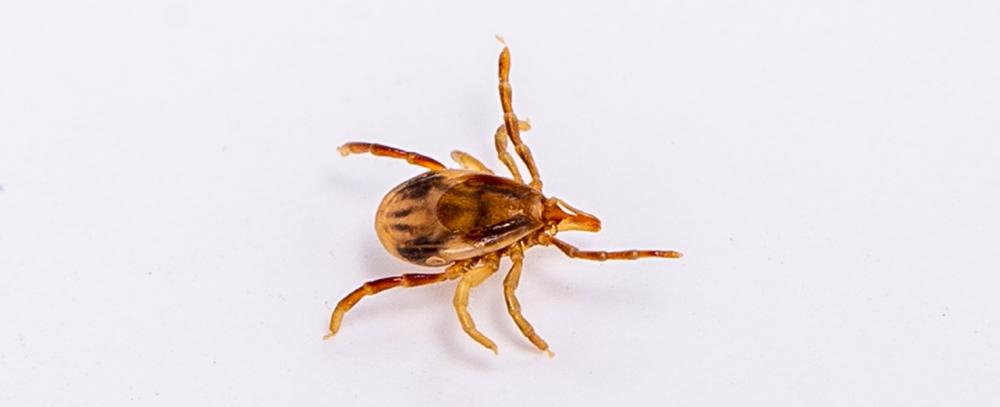
Where are ticks commonly found?
Ticks like shady, moist leaf litter with an overstory of trees or shrubs and, in the spring, they deposit their eggs into such places allowing larvae to emerge in the fall and crawl into low-lying vegetation. The 3 meter boundary closest to the lawn's edge are a tick migration zone, where 82% of tick nymphs in lawns are found
Why are ticks considered a pest?
Tick-borne diseases occurring in Australia are Australian Tick Typhus or 'Spotted Fever' (along the coastal strip of eastern Australia from North Queensland to Victoria) and 'Flinders Island Spotted Fever' (in Victoria, Tasmania and Flinders Island in Bass Strait). Early symptoms of tick paralysis can include rashes, headache, fever, flu like symptoms, tenderness of lymph nodes, unsteady gait, intolerance to bright light, increased weakness of the limbs and partial facial paralysis.
What is the biology and lifecycle of a tick?
Ticks have four stages to their lifecycle, namely egg, larva, nymph, and adult.
Management Tips for Ticks
A habitat preferred by ticks is the interface where a lawn meets the forest, or more generally, the ecotone, which is unmaintained transitional edge habitat between woodlands and open areas. Therefore, one tick management strategy is to remove leaf litter, brush, and weeds at the edge of the woods.
Ticks like shady, moist leaf litter with an overstory of trees or shrubs and, in the spring, they deposit their eggs into such places allowing larvae to emerge in the fall and crawl into low-lying vegetation.
The 3 meter boundary closest to the lawn's edge are a tick migration zone, where 82% of tick nymphs in lawns are found
PRODUCT SOLUTIONS
-
 Biflex Mikron Insecticide64g/L Bifenthrin, 53g/L Acetamiprid
Biflex Mikron Insecticide64g/L Bifenthrin, 53g/L AcetamipridBiflex Mikron Insecticide provides lightning fast control and enduring residual protection from the powerful combination of two active ingredients in a cutting-edge microemulsion formulation.
-
 Biflex Aqua Max Insecticide and Termiticide100g/L Bifenthrin
Biflex Aqua Max Insecticide and Termiticide100g/L BifenthrinBiflex AquaMax is the first ever Professional Strength, multi-insecticide and termiticide. Effective on a wide range of common household pests and all termite species in Australia.
-
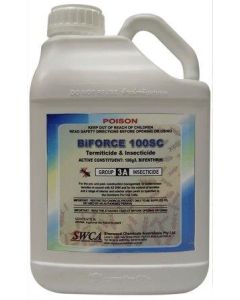 Biforce 100SC Termiticide and Insecticide100g/L Bifenthrin
Biforce 100SC Termiticide and Insecticide100g/L BifenthrinBiforce 100SC Termiticide & Insecticide is a water-based termiticide for pre and post construction management of termites inside and out and for general perimeter application of most crawling insects.
-
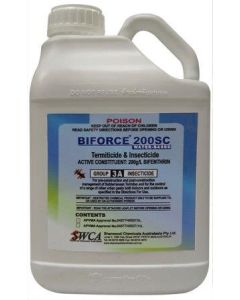 Biforce 200SC Termiticide and Insecticide200g/L Bifenthrin
Biforce 200SC Termiticide and Insecticide200g/L BifenthrinBiforce 200SC Termiticide & Insecticide is a professional strength water-based termiticide for pre and post construction management of termites inside and out.
-
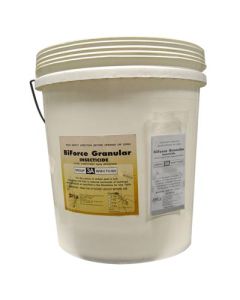 Biforce Granular Insecticide2g/kg Bifenthrin
Biforce Granular Insecticide2g/kg BifenthrinA ready to use contact residual granular insecticide for external control of ants, fleas and ticks in areas such as gardens, lawns, around BBQs and other external surrounds of buildings and structures.
-
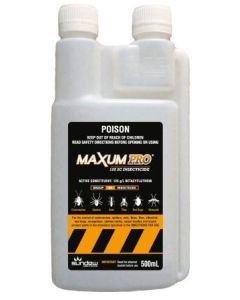 Maxum PRO 125 SC Insecticide 500mL125g/L Beta Cyfluthrin
Maxum PRO 125 SC Insecticide 500mL125g/L Beta CyfluthrinMaxumPRO is a robust, fast-acting, knock-down, broad spectrum insecticide for general insect control in domestic and commercial situations, as well as for the control of pest insects of turf and ornamental plants.
-
 Antagonist Pro Insecticide80g/L Bifenthrin
Antagonist Pro Insecticide80g/L BifenthrinANTagonist PRO insecticide is a suspension concentrate formulation containing a Polymer Enhanced Synthetic Pyrethroid approved for the treatment of ants, spiders, wasps, cockroaches, mosquitoes, midges, fleas, flies, ticks, termites and turf pests including lawn armyworms, sod webworms, argentine stem weevil, billbug, African black beetle, ants and ornamental pest including mites, aphids, caterpillars, loopers, earworm, budworm, light brown apple moth, whitefly, mealybug, thrips and cutworms.
-
 Suspend Flexx Insecticide25g/L Deltamethrin
Suspend Flexx Insecticide25g/L DeltamethrinSuspend Flexx Insecticide is a synthetic pyrethroid (3A) formulation for the knockdown and residual control of a range of insect pests in various indoor and outdoor situations.
-
 Brigade Granular Insecticide2g/kg Bifenthrin
Brigade Granular Insecticide2g/kg BifenthrinBrigade Granular Insecticide is formulated for the control of certain pests in turf and for control of ants, fleas and ticks in external surrounds of buildings and structures. Permit held for application in potting media for use in container grown ornamentals to control Red Imported Fire Ants for various intervals.
-
 Tempo Residual Insecticide 1L25 g/L betacyfluthrin
Tempo Residual Insecticide 1L25 g/L betacyfluthrinTempo Residual Insecticide is a fast-acting, knock-down, broad-spectrum insecticide for general insect control in domestic and commercial situations, as well as for the control of pest insects of turf and ornamental plants.
JOIN OUR NEWSLETTER NOW!
Be the first to hear about the latest specials, products, tips and ideas.

